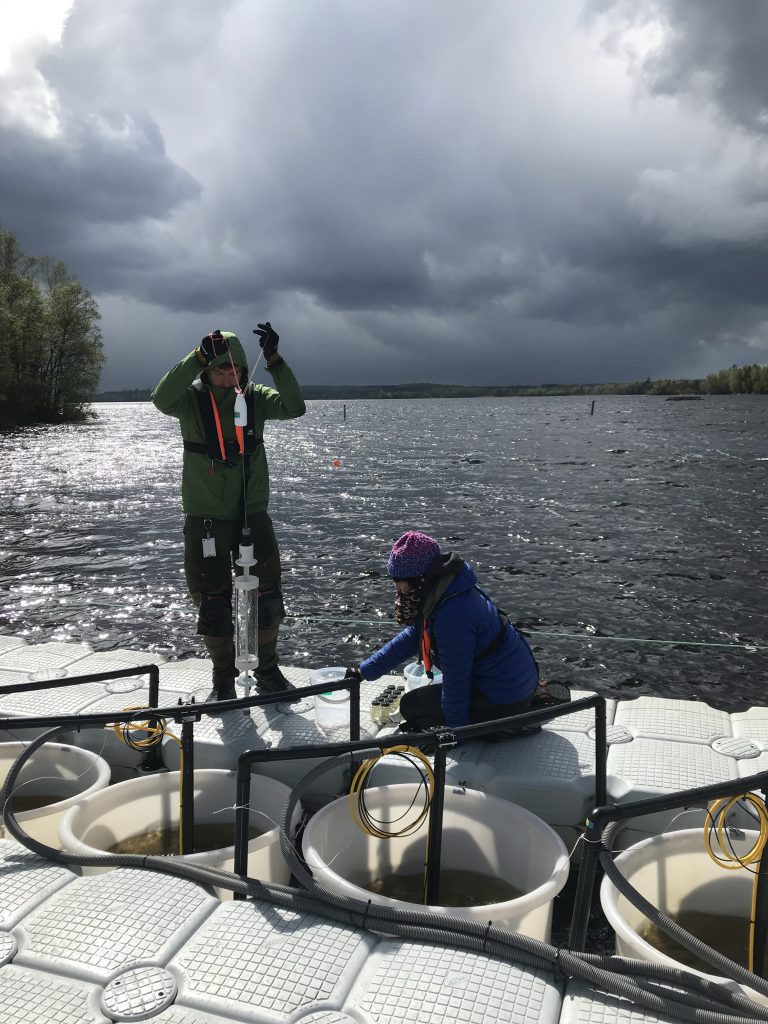The migratory behaviour effects of individual zooplankton …
The migratory behaviour effects of individual zooplankton in response to threats

Marcus Lee and Carlota Solano-Udina taking water samples during a cold and windy May day 2019.
Photo: Juha Rankinen
Marcus Lee is a PhD student in Aquatic Ecology at Lund University. Since the beginning of April, he is conducting research at the SITES associated station Bolmen on how the energetic state of individual zooplankton effects their migratory behaviour in response to threats.
Future predictions of climate change indicate a higher propensity for lakes to become eutrophic, meaning the lake becomes rich in nutrients and so supporting a dense phytoplankton population in the surface waters. These ‘algal blooms’ have the potential to harbour toxic species which has profound effects on how lakes can be used. Despite this, increasing algae may also provide its own solution.
Zooplankton which feast upon phytoplankton can only do so under the cover of darkness, for fear of being consumed by visually hunting fish. This means they have to migrate vertically to the surface during the night and return to the deep in the day. Marcus hypothesises that with increasing phytoplankton, animals will have abundant food and over the season this will lead to a stronger diel vertical migration behaviour, and thereby be safer from predation allowing more opportunities to control the algal density.
With his research at Bolmen he will demonstrate this by rearing zooplankton, Daphnia magna, under natural and increased phytoplankton conditions in a mesocosm design for two months. These mesocosms make it possible to repeatedly generate different conditions and closely monitor everything from temperature to the amount of chlorophyll in the water.
Over the course of the experiment Marcus will sample the populations at differing depths repeatedly, to determine the spatial structure of the mesocosms. He will also collect random individuals to assay the diel vertical migration behaviour which will be achieved by utilising a 3D computer-tracking platform at Lund University.
The results of this research can be expected to prove that diel vertical migration is far from a constant, as it strongly depends upon the available resources in a semi-natural environment. Marcus foresees that the results of the research will make it possible to understand how the behaviour of individuals effect whole ecosystems, which can have a great impact on how to keep the water clean.
The project is scheduled to the end of July.